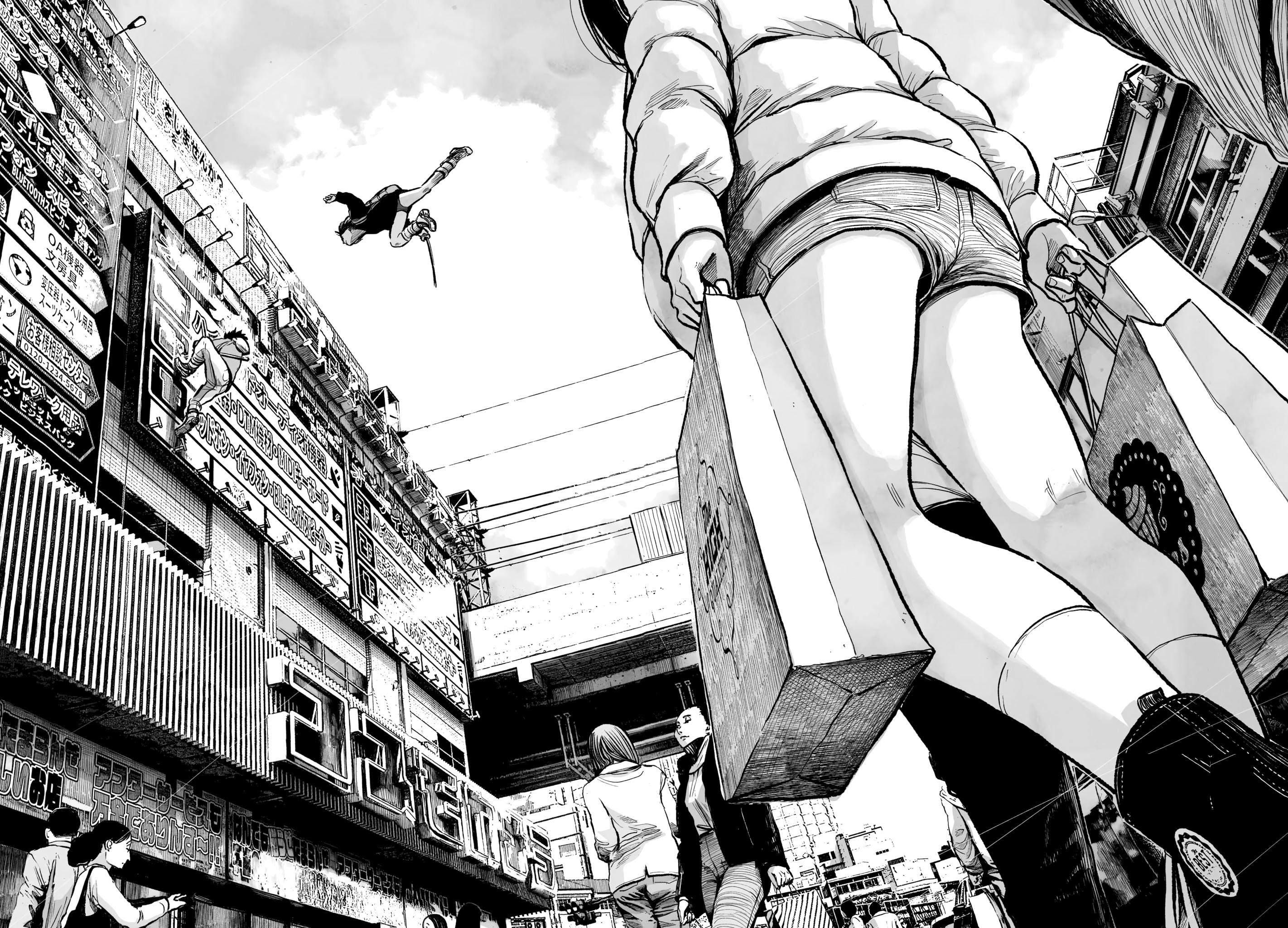Mujina into the deep chapter 4 – Embarking on Chapter 4 of Mujina Into the Deep, we plunge into a captivating world of intrigue, character growth, and profound symbolism. This chapter introduces a kaleidoscope of new characters, igniting fresh dynamics and propelling the narrative forward with vigor.
As the story unfolds, we witness the evolution of Mujina and other pivotal characters, their motivations and conflicts intertwining in a complex tapestry. The setting of Chapter 4 plays a pivotal role, immersing us in a vivid and atmospheric landscape that shapes the tone and mood of the narrative.
Chapter Summary

Chapter 4 of “Mujina into the Deep” introduces new characters and explores the themes of loyalty, betrayal, and the nature of heroism. The chapter also sets up a conflict between two rival factions within the Mujina gang.
New Characters
- Oda Nobukatsu: The heir to the Oda clan, who is seeking revenge against the Mujina gang for the death of his father.
- Nanao: A kunoichi (female ninja) who is loyal to Nobukatsu and helps him in his quest for revenge.
- Jubei Yagyu: A master swordsman who is hired by the Mujina gang to protect them from Nobukatsu.
Themes and Motifs
The chapter explores the themes of loyalty, betrayal, and the nature of heroism. Nobukatsu is torn between his loyalty to his clan and his desire for revenge. Nanao is loyal to Nobukatsu, but she is also willing to betray him if it means protecting her village. Jubei Yagyu is a skilled swordsman, but he is also a mercenary who will fight for whoever pays him the most money.
Conflict, Mujina into the deep chapter 4
The chapter sets up a conflict between two rival factions within the Mujina gang. One faction is led by Gyobu Masataka, who is a ruthless and ambitious leader. The other faction is led by Hanbei Takenaka, who is a more cautious and pragmatic leader. The two factions are vying for control of the Mujina gang, and the conflict between them is likely to escalate in the coming chapters.
Character Analysis
The chapter reveals intricate character developments and dynamics, particularly in the titular character, Mujina, and other key individuals.
Mujina undergoes significant growth, confronting his past and evolving from a timid, self-deprecating individual to a more confident and assertive one. His encounter with the enigmatic woman forces him to confront his insecurities and embrace his true self.
Supporting Characters
The enigmatic woman plays a pivotal role in Mujina’s transformation. Her mysterious aura and ability to see through his facade challenge him to break free from his self-imposed limitations.
Mujina’s friends, initially skeptical of his newfound confidence, gradually come to accept his growth. Their support and encouragement further fuel his transformation.
Setting and Atmosphere: Mujina Into The Deep Chapter 4

Chapter 4 of “Mujina into the Deep” unfolds in a secluded and eerie setting that profoundly impacts the story’s tone and mood. The remote island of Shishijima serves as a desolate backdrop, isolated from the mainland and shrouded in a veil of mystery.
Sensory Details
The author masterfully employs sensory details to create a vivid and immersive atmosphere. The relentless crashing of waves against the rocky shore evokes a sense of isolation and foreboding. The pungent scent of seaweed and the dampness of the air permeate the senses, contributing to a feeling of unease and disorientation.
Contribution to Tone and Mood
The desolate setting and evocative sensory details work in concert to establish a somber and unsettling tone. The isolation of Shishijima mirrors the emotional isolation experienced by the characters, while the eerie atmosphere foreshadows the impending danger that lurks beneath the surface.
Symbolism and Metaphor

Chapter 4 of Mujina into the Deep employs a rich tapestry of symbols and metaphors to enhance the story’s meaning and provide deeper insights into its themes and characters. These literary devices serve as powerful tools for exploring the complexities of the narrative, inviting readers to engage in thoughtful interpretation.
One prominent symbol in the chapter is the mujina itself, a mythical creature often associated with transformation and deception. Its presence throughout the story suggests the fluidity and ambiguity that permeate the lives of the characters. As they navigate their own personal journeys and relationships, they grapple with the complexities of their identities and the ever-changing nature of their surroundings.
The Mujina as a Symbol of Transformation
The mujina’s ability to transform its appearance mirrors the transformative experiences undergone by the characters. For example, Kiyoko’s transformation from a shy and timid girl into a confident and assertive woman parallels the mujina’s ability to shed its old skin and emerge as a new creature. This symbolism highlights the potential for growth and change within each individual, as well as the challenges and opportunities that accompany such transformations.
Metaphors of Water and Drowning
Water imagery is prevalent throughout the chapter, serving as a metaphor for both life and death. The river, in particular, represents the passage of time and the inevitable journey towards the unknown. As the characters navigate its treacherous waters, they confront their own mortality and the fragility of their existence. The threat of drowning symbolizes the dangers and uncertainties that lie ahead, reminding them of the ever-present possibility of loss and tragedy.
Closing Notes
In Chapter 4 of Mujina Into the Deep, we are left on the precipice of thrilling revelations and profound transformations. The themes and motifs explored in this chapter resonate deeply, inviting us to contemplate the complexities of human nature and the enigmatic forces that shape our destinies.
Key Questions Answered
What is the significance of the new characters introduced in Chapter 4?
These characters bring fresh perspectives, challenge established dynamics, and drive the plot in unexpected directions.
How does the setting of Chapter 4 contribute to the story?
The atmospheric and evocative setting enhances the mood, influences character interactions, and foreshadows future events.